So what if you “just” want to show your slides?
Education is one of the main application domains of digital pathology. And there are many instances where you just have a couple of slides that you want people to look at. When Pathomation first became involved in deploying its software for facilitating seminars, we used PMA.view.
But while it’s possible to do this, PMA.view is not a good solution for this particular problem:
- People still need to login in PMA.view
- PMA.view requires telling people where to navigate to (which root-directories / paths); your root-directories on the PMA.core side of things may not exactly reflect the content that you want people to see.
- PMA.core is folder-based navigation, and PMA.view is too. This means that the concept of a case (a group of slides belonging to a patient or experiment) is not intuitively represented
- neither PMA.view nor PMA.core support any of the visual cue-elements that we’ve all gotten accustomed to in recent years such as avatars.
- The learning curve of PMA.view is still too steep for people that just need to look at slides. PMA.view is overshooting for what you want people to actually experience
How did people used to do it? They traveled to conferences with a slidebox in their hand luggage. Within the slidebox; neatly organized slides, sorted by case. We don’t want to be sensational here and say that the slides got lost all the same, or that they broke all the time, or got confiscated by security in a post-9/11 world (glass slides + ninja pathologist = impromptu shiroken?).
But: things could happen when traveling with physical slides, and the most likely issue was probably still somebody forgetting to take their slides with them in the first place!
Also: when traveling with physical slides you depend heavily on the organization’s talent of providing and calibrating multi-headed microscope equipment. As more people attend, aligning all the optics of these becomes ever harder, and for large groups this is just impractical.
Cue PMA.slidebox
So we got thinking… If people are used to physical slideboxes, why not just make a virtual slidebox? This is exactly what PMA.slidebox is and does!
PMA.slidebox, like all our software, relies on PMA.core. It means that you can use all the great features of PMA.core (different root-directories, access control), without having to explain it to your audience.
All your audience sees, without to register or login or need to install or download anything (zero footprint) is this:
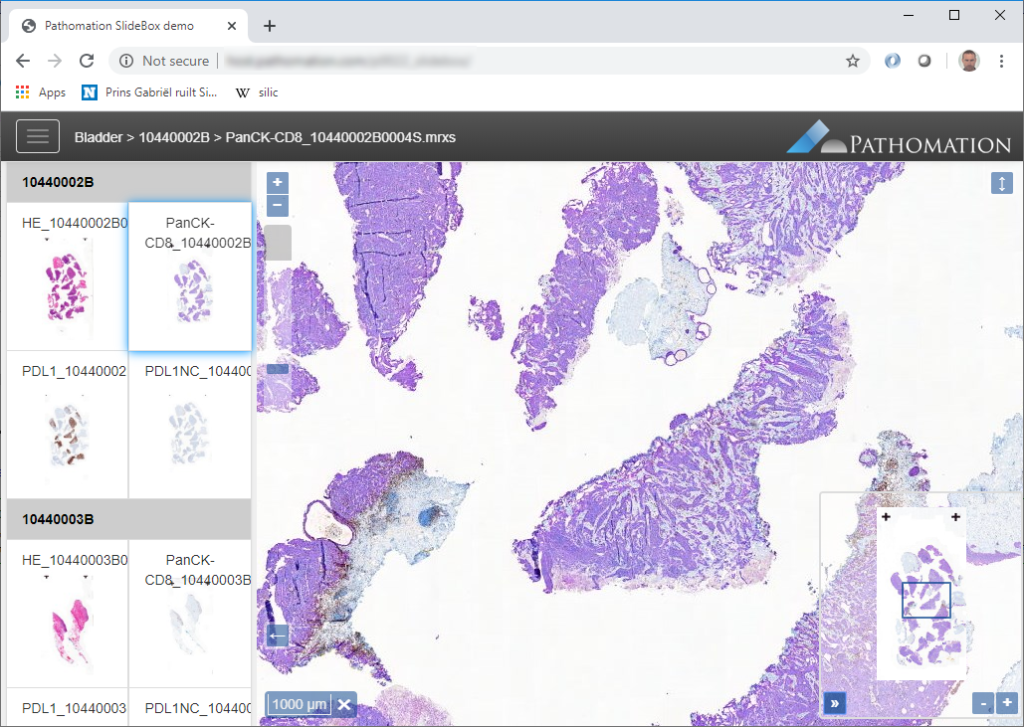
So how does it work? PMA.slidebox shows up to four collections in the top-left corner of the screen (screenshot only shows three). When you select a collection, you see the “cases” appear underneath it, along with the slides for each “case”.
We put the word “case” between quotes deliberately because you don’t have to set it up this way. You can have a simple list of slides without any hierarchy or structure to it, and PMA.slidebox will pick it up. Similarly, if you only have a couple of cases, you could turn those into individual collections, and present them as such.
What you want to show and how you want to show it is completely up to you. It’s just like a real slidebox: you put the slides in that you want, and you organize them the way you want them, too.
Want to give it a go yourself? Here’s an example how such a virtual slidebox works in practice: http://host.pathomation.com/p0022_slidebox/
Configuration
PMA.slidebox is flexible. It is hosted on a website, somewhere (can be on your infrastructure, or on ours). If you don’t have PHP, we can configure it for you; but if you do, you can configure everything by yourself via a configuration panel.
What you first need to do is decide how you want to have everything structured. You can build a hierarchy of up to three deep, with the following levels:
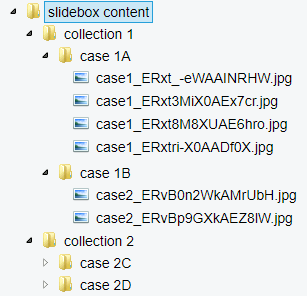
As you have only 4 cases in the above screenshot, you could simplify your hierarchy like this:
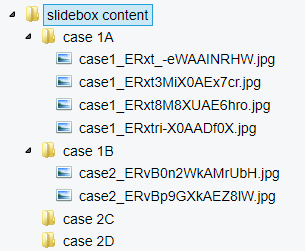
While PMA.slidebox is flexible, we should point out that it is necessary to have some kind of hierarchy at least. You cannot just dump all your slides into a single folder and expect the software to figure it out from there.
Note: if you do have large repositories of slides, and you want structured case creation and organization, you should have a look at PMA.control.
Here’s what the setup looks like when your spread your cases across only two collections:
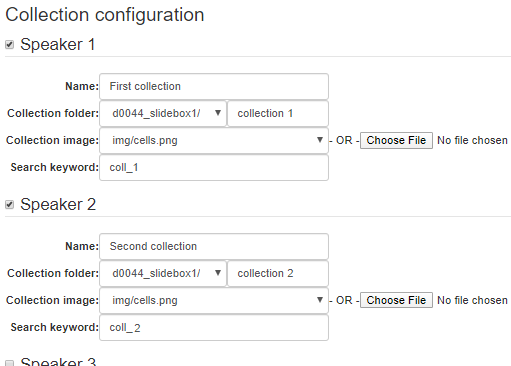
And here’s what that same group of slides looks like, but this time with each case being defined as its own separate collection:
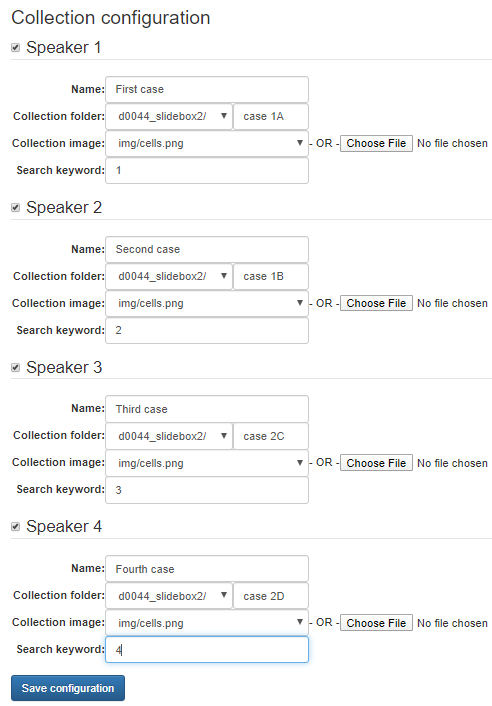
In closing
With our PMA.slidebox product, Pathomation solves the problem of mass-distribution of slide collections. When you just want to share your slides with people in a somewhat organized (collection and cases) fashion, PMA.slidebox is the perfect solution for you. The easy to use configuration panel behind the front-end makes it a breeze to point to the exact content that you want to display, and under no circumstances does the end-user have to do anything else except click on the URL that you provide them with.
Find out more about PMA.slidebox at our website at http://www.pathomation.com/pma-slidebox.
